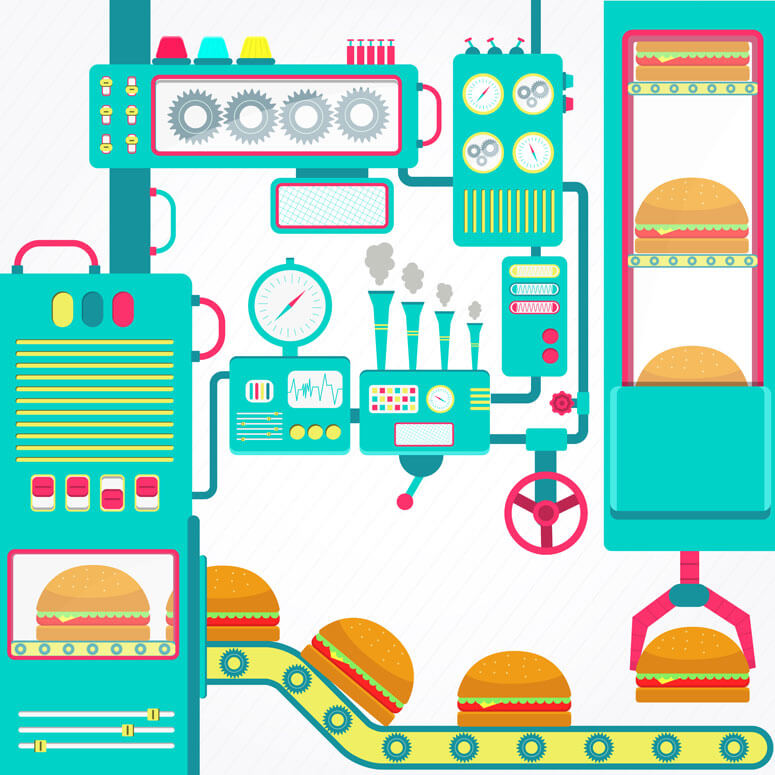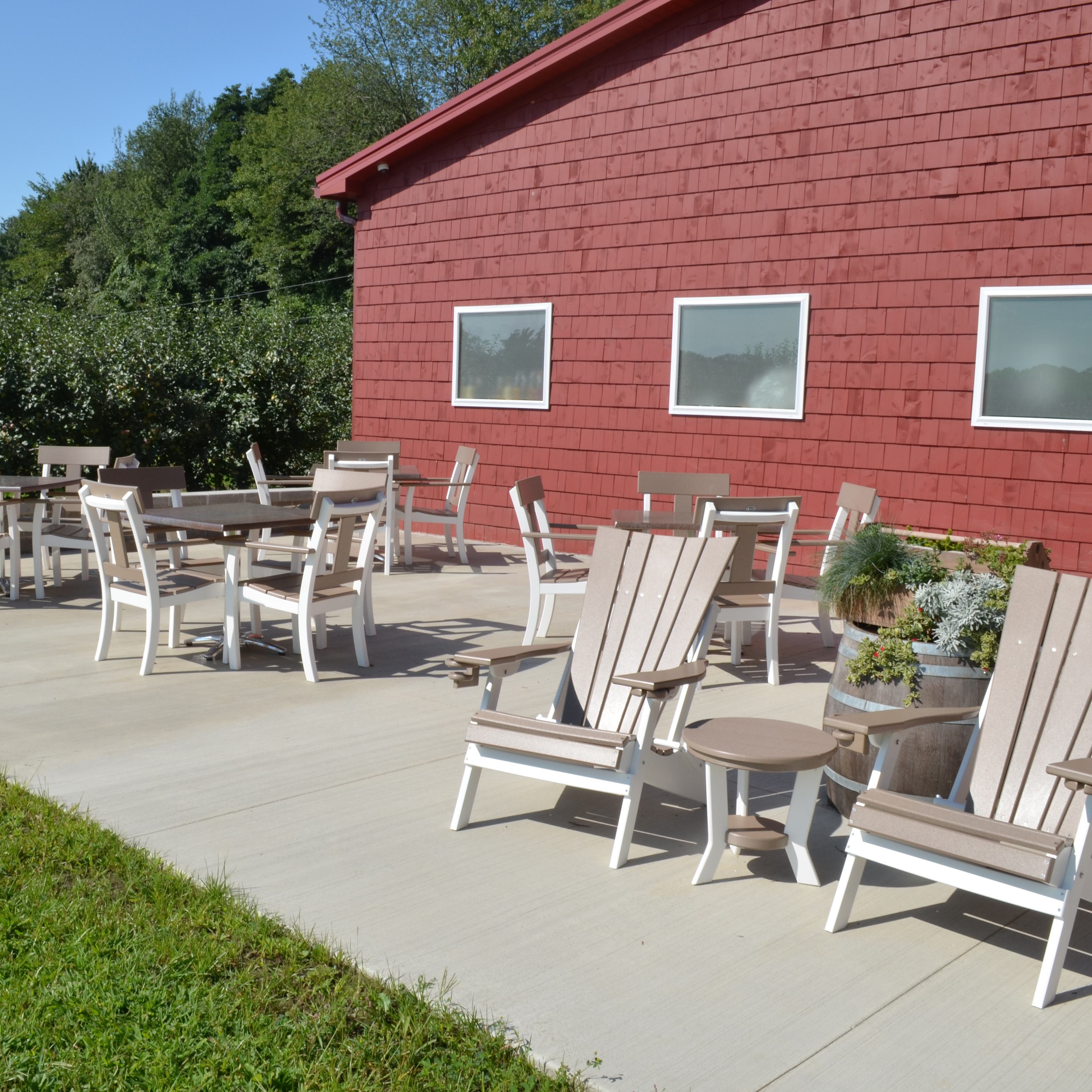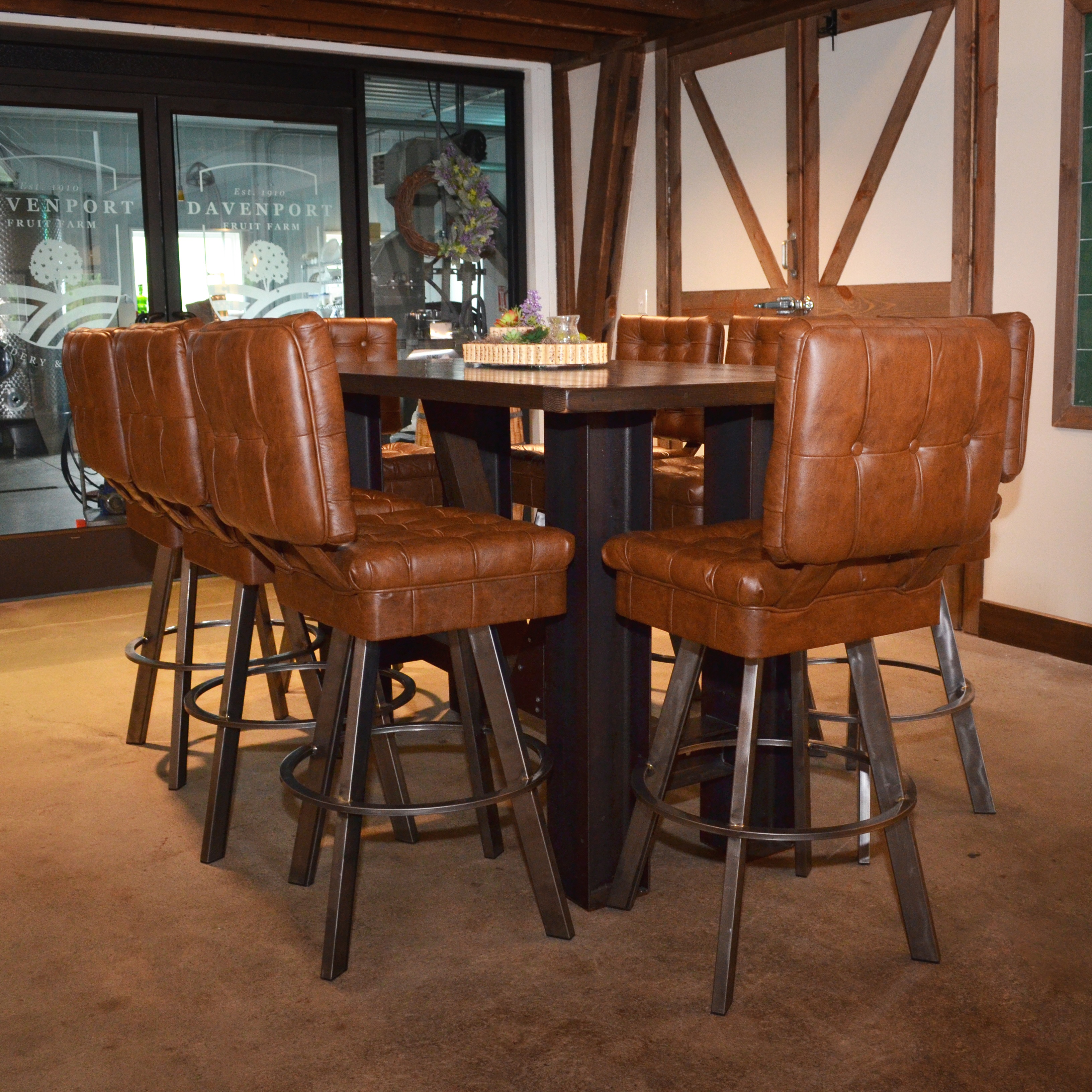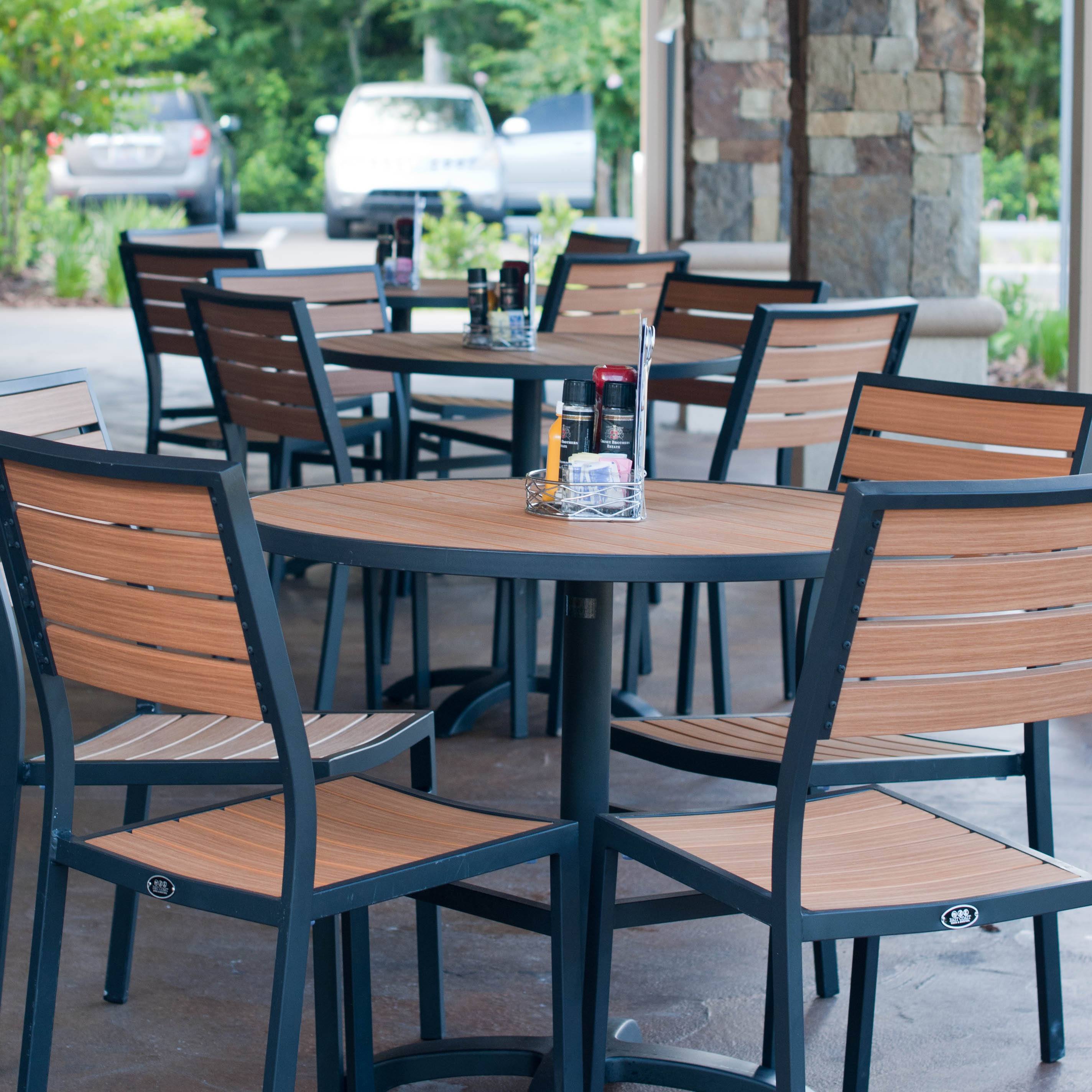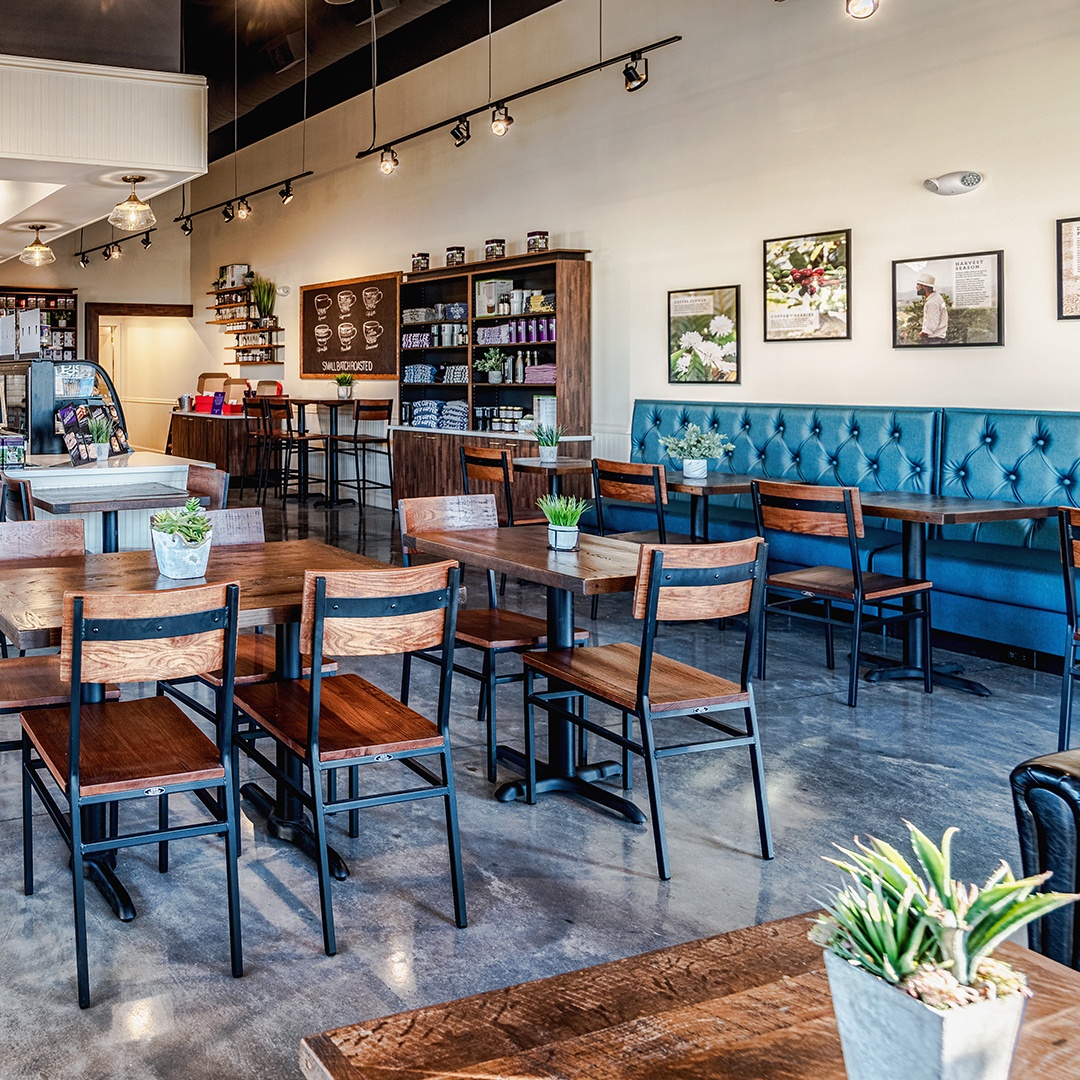When you hear the words “automation” and “restaurant” in the same sentence, what comes to mind? You may envision being seated at a table with the ability to order and pay for your meal right from a table kiosk. Or you may jump to the idea of a robot server holding a tray of food that is delivered to your table from the restaurant kitchen. Wherever your thoughts turn, automation is becoming more popular in the restaurant industry and will likely continue to grow in the future
What is Restaurant Automation?
Restaurant automation, as defined in Wikipedia, means “the use of restaurant management systems to automate the major operations of a restaurant establishment.” Automation can be partial or complete, with partial meaning some human intervention in the major operations and complete meaning none at all. Automation can be seen in ordering food, preparing food, and even in serving and billing, with technologies like mobile and robotics playing key roles in its implementation.
Who is using automation in their restaurant?
Many restaurants are already taking new technologies to partially automate some of the operations within their restaurant. One major chain that has implemented new devices into their restaurants is McDonald’s, which has franchises all over the world, with many in Europe and Australia already using self-ordering kiosks on their front lines. These kiosks are currently being tested in several locations in the United States and will soon be installed in 2,000 franchises across the nation. The kiosks offer customers the ability to customize their order through a new “Create Your Taste” menu that offers options with each order, from the type of bun, cheese, and meat to the toppings and sauces to finish it off. Once submitted, the order is made at a different cooking station and then delivered to the customer at their table. Other popular restaurants that are currently using a complete tablet ordering system are Chili’s Grill & Bar and Applebee’s. The customer’s dining experience involves a friendly hostess escorting them to their table where they arrive to find a tablet to complete their order. And, while the customers wait, the tablet includes games that they can play for a small fee to keep them entertained. The goal is for customers to not only place their order, but to complete payment via the self-ordering tablet. The human server is only needed to deliver the food and refill drinks.
There are also restaurants that are already taking advantage of complete automation in their establishments. Many of these restaurants can be found overseas like Genki Sushi in Hong Kong, where ordering sushi doesn’t involve any human interaction, and Wall-E Restaurant in China, where robots are your waiters. But, you can also find fully automated restaurants in the United States. One of those restaurants is Eatsa, a quinoa restaurant in San Francisco, California. This restaurant is fully automated with no waiters, no one taking orders at a counter, and very limited staff. The restaurant only employs real people to prepare food, unseen by the customer, and one or two individuals to assist customers with ordering via an iPad and/or to keep the dining area clean. Without having all of the typical staff and experiences when a customer walks in, there is a new process to follow with ordering and paying for food. Customers walk in with the view of a digital menu paired with many iPad’s set up as kiosks for ordering. They proceed with their customized order and once the order is complete, the customer’s name comes up on a screen. When the food is cooked and ready, a number appears next to the customer’s name which corresponds to a “cubby,” on a large wall of cubbies with the same number. This means that the food is ready and available in the cubby. With two taps of the screen, the cubby opens and the customer takes his/her food. Like Eatsa says, “It’s pure magic,” and that magic is resonating well with the customers as proven through many positive reviews on Yelp. So well, in fact, that Eatsa plans to open up two more locations in the San Francisco area by early 2016.
Another restaurant that is using automation is Fritz’s Railroad Restaurant. Located in or near Kansas City, Kansas, the automation in this restaurant comes from service via train delivery cars rather than robots…and humans. Customers grab a table in the dining area which hosts a phone right at the table. They pick up the phone, place their order, and within a short amount of time their food and drinks are delivered by a train delivery car that follows a track which makes a stop at each table. The novelty of a train bringing food and drinks to the table has been quite appealing to customers, especially to those who have a love for trains.
What are the benefits of automating your restaurant?
Automation offers many benefits to both owners in the restaurant industry and their customers. Owners find that there is a more efficient business flow in the kitchen, better control of costs, and easier access to real time sales data. Automation allows for greater output at a lower cost and is typically used as a compliment to labor, rather than a complete replacement. Remaining employees can then focus on the restaurant’s core competencies like food preparation and customer relations. As owners and managers face pressure to raise minimum wages, utilizing employees as effectively as possible will become even more important and early adopters of automation may gain a competitive advantage in the short term.
For customers, automation is empowering. They are able to customize their order, receive it the way they want it, and get it faster than they’ve had before. Furthermore, automation injects an element of consistency into every facet of the operation where it is utilized. Customer’s know that when they enter their order into a kiosk, it will be relayed to the kitchen exactly how they ordered it; and, if a robot is cooking it, the final product will have little variation from one time to the next.
What are the challenges of automation?
Automation can have challenges, and those challenges are important for restaurant owners to consider when thinking about automating their business. The first is the initial cost. The technologies needed to make the automation dream come true can have a big price tag, ranging from tens of thousands to millions per location depending on the level of automation desired. In addition to equipment, owners will also have to factor in any monthly subscription costs, employee training, and maintenance fees. These costs can put automation out of reach of many single location “mom and pop” establishments. However, like most new technologies, costs will likely come down with time as new vendors enter and innovate the market.
Second, while early adoption of automation can provide a short term competitive advantage, it also has the potential to commoditize aspects of your operation in the long term. Think about it. Once kiosk, or tablet ordering becomes widespread, how will you make that part of your business stand out from competitors. The same goes for server automation; once a robot or conveyor belt is delivering the food to your customers, what separates you from the competition if they have the same robot or conveyor belt? Gone is the server whose friendly smiles and warm demeanor built a rapport with customers that kept them coming back. Technology, while increasing efficiency and consistency, can also reduce the number of opportunities to separate your business from the competition. If an area of your operations is not considered one of your restaurant’s core competencies, then automating it might make sense; but be sure to consider the long term consequences before automating any function that makes your business unique.
The bottom line.
The decision to implement any degree of automation in your restaurant will, like most business decisions, boil down to your bottom line. Will the financial benefits outweigh the costs involved? The best thing that you can do is to research and find out what automation technologies are out there, as well as the cost of its maintenance and implementation. While doing this, think about your restaurant and envision how and where you can use these devices and services in your current processes. Gathering this information will provide you with a better picture of how best to take the automation plunge. Although we cannot predict the future, we can assume from past history in other industries that technology is only going to continue to grow, improve, and become more cost effective. With it, it is very possible that automation will one day become a common part of nearly every restaurant experience.

